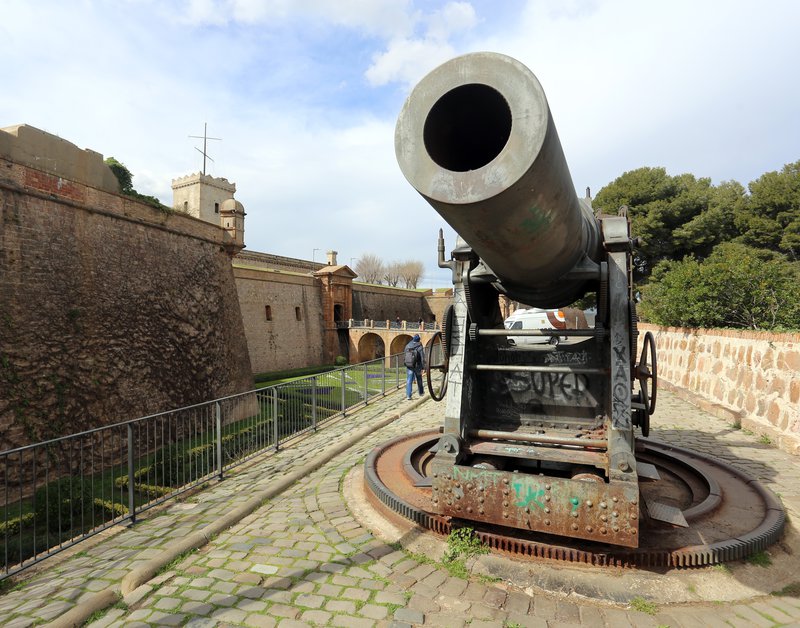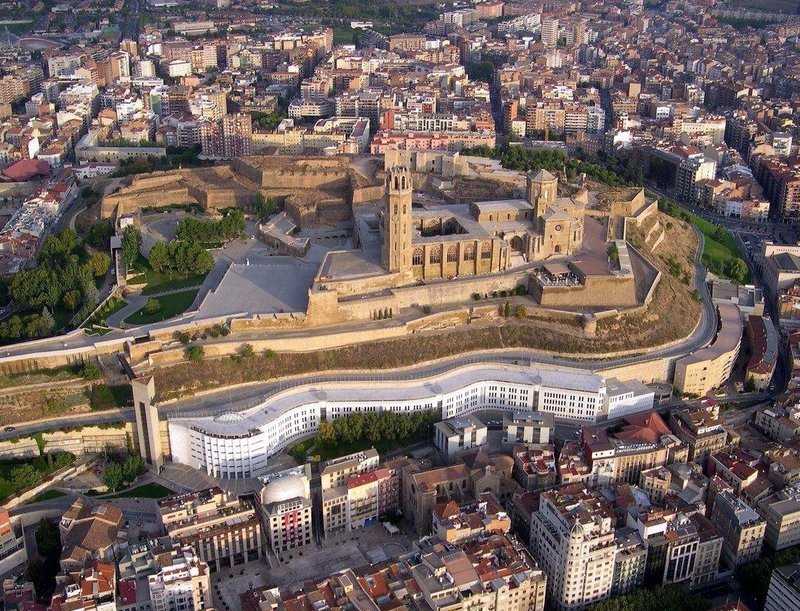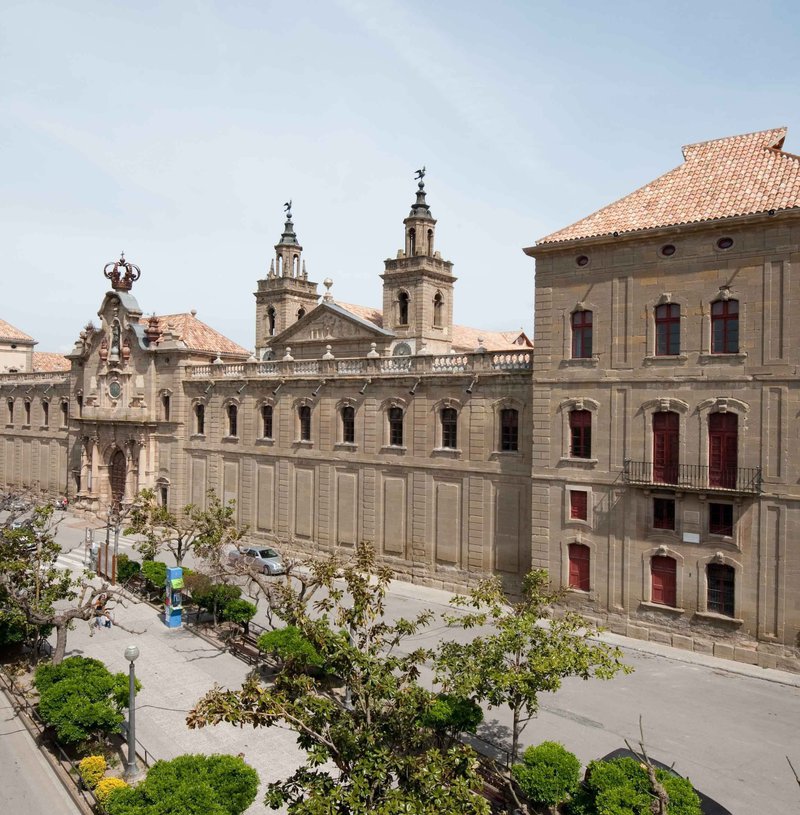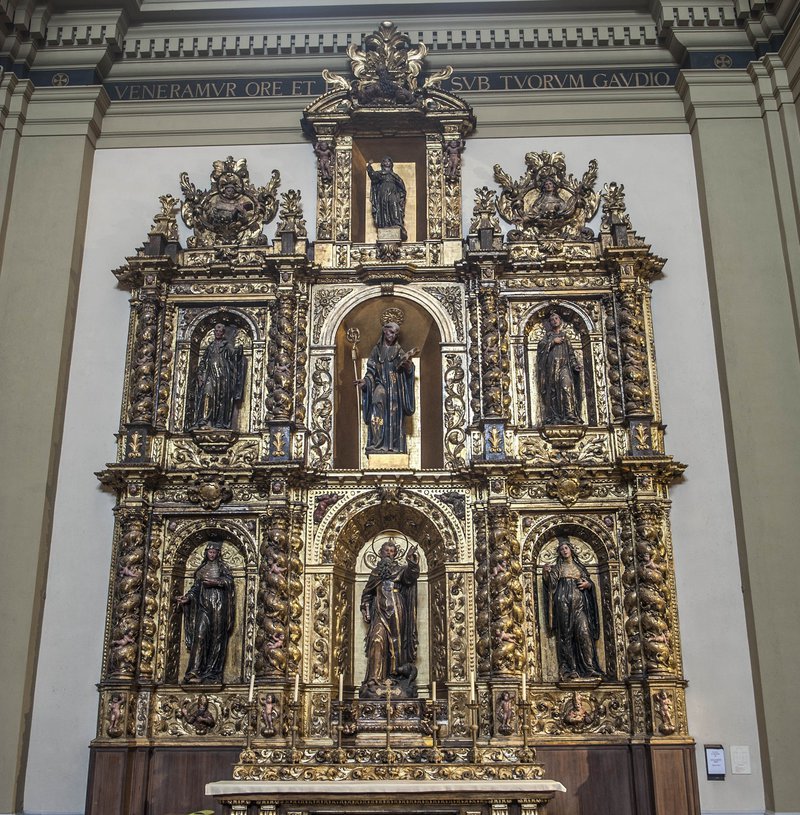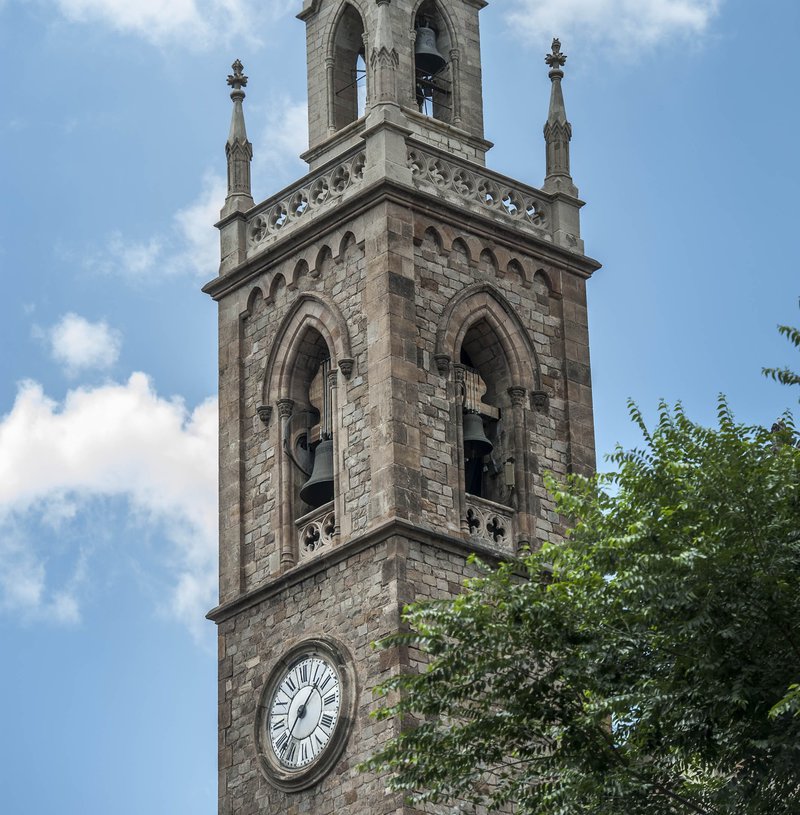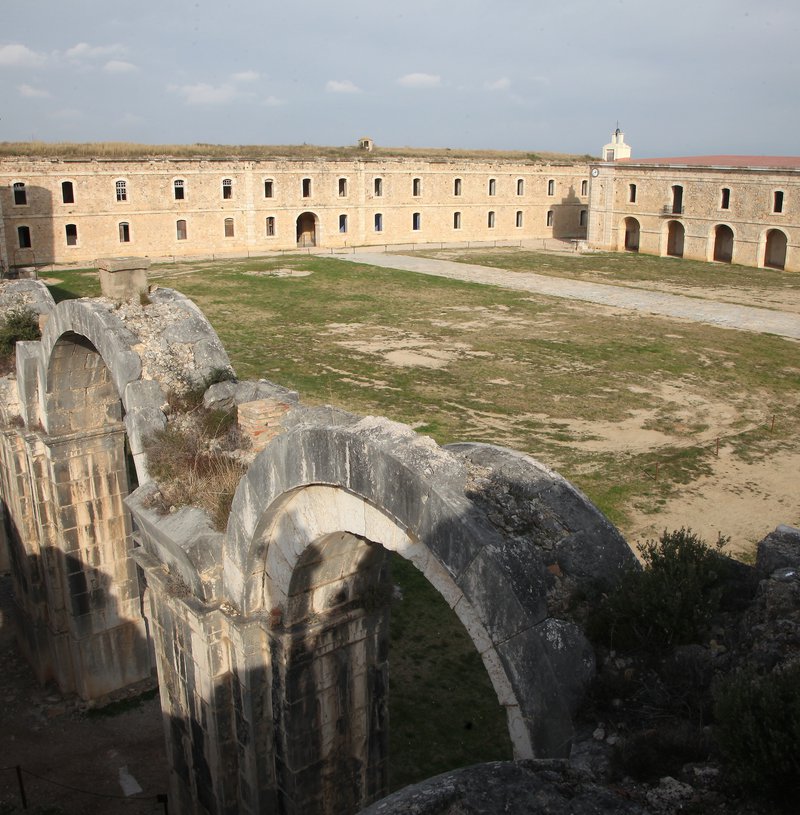Exploring the Bourbon legacy
Three hundred years ago Bourbon troops took Barcelona beginning a repression that changed the city
Many buildings were pulled down, including entire
districts
With political repression, came a military crackdown of public executions
'The occupation and construction were not only about pacifying the territory'
Until Ciutadella was knocked down, it was the symbol of the Bourbon repression
The fall of Barcelona to Bourbon troops in 1714 was a turning point in Catalonia's history. The king, the laws, the political system, all changed, including the city's appearance. The origin of such a radical transformation was in Philip V's determination to erase any trace of the rival Austrian regime.
Consequently, many buildings were pulled down, including entire neighbourhoods to make space for structures used in monitoring the local population. The military occupation that followed the events of 1714 was present everywhere in the form of fortifications, converted barracks and Bourbon troops billeted in the homes of local people (at the latter's expense). New fortifications in Barcelona, such as the Ciutadella fortress, which became the main symbol of the repression, were not constructed to defend the population, but to maintain control over the local people.
Today, 300 years later, remains from that time are still with us. In fact, there are buildings still being used, such as the Capitania General, used by Spanish armed forces. Others have disappeared, though some of them are conspicuous by their absence. What's more, tracing the effects of the Bourbon repression of Catalonia shows that the consequences of the military defeat and occupation of Barcelona three centuries ago continue to influence political and social attitudes today.
“The presence of a foreign army of occupation and the construction of Ciutadella itself were not only about pacifying and controlling the territory, but were also aimed at exalting Philip V and a way of bringing about the complete subjugation of Catalonia by the Bourbon monarchy visible,” writes Josep M. Torras i Ribé in his book, Felip V contra Catalunya, which brings together testimony from the Bourbon authorities of the measures imposed all over Catalonia. One example can be seen in the words of the marquis of Castel-Rodrigo, captain general of Catalonia between 1715 and 1719, who advocates “erasing however possible that Mother Tongue of such a rebellious nation, proscribing it via a Tribunal made up of entirely loyal, zealous and trustworthy subjects.” Castel-Rodrigo goes on to justify his position: “As Castilian Ministers and those from other Provinces of Spain have to meet, they will not easily understand the Catalan language, which is so different from Castilian.”
Along with political repression through the Nova Planta Decree, the abolishment of institutions and the persecution of the language, came a military crackdown, which included public executions, the requisitioning of buildings, and the building of barracks. This model was extended across the country, reaching its height in the capital.
At the same time, any large building, whether manor houses or castles, which could be fortified and used against Philip's regime were hauled down. In 1715, there were 30,030 soldiers stationed in Catalonia, according to the book, Repressió borbònica i resistència catalana (1714-1736), by Antonio Muñoz González and Josep Catà i Tur. In Barcelona alone, in 1715 there were 15,000 men in the occupying garrison, compared with a local population of no more than 35,000. Later, in 1725, some 62% of Girona's population of 3,775 inhabitants was made up of stationed soldiers. In the same year, in Tarragona, 35.9% of the population of 3,445 inhabitants were occupying soldiers, while in Lleida the number was 34.6% of 3,580 residents.
The Mercé convent
In Barcelona, one of the requisitioned public buildings is still in use: the Capitania General, which today houses the offices of the Spanish armed forces in the Catalan capital. However, before Philip V's occupation of the city, the building had housed a religious order dedicated to the city's patron, La Mercé. In the 19th century the building was first turned into barracks before becoming the Capitania General, the headquarters of the Spanish army in Barcelona.
Under the Bourbon regime, the Capitania General was the foremost representative of royal power in Catalonia. According to the writer and photographer, Jordi Peñarroja, author of many studies of this era, the only element that remains of the convent is its cloister. Unfortunately, a request to visit the building went unanswered.
The Bourbon axis of control over the Barcelona population was made up of the Ciutadella fortress (which was built on land that before 1717 had been occupied by around a thousand dwellings in the Born neighbourhood), Montjuïc castle, the Estudi General (the Barcelona university that was converted into a barracks near the top of the Rambla) and Drassanes.
Until Ciutadella was knocked down in 1868, the fortress was the main symbol of the Bourbon repression. Meanwhile, the first fortifications on Montjuïc were built in 1640 to defend the city. Later, however, the structure would be used to maintain control over the city and, in the 19th century, to shell Barcelona into submission. In the 18th century, the Bourbon regime enlarged the castle along with its garrison and artillery capability, which rose to 120 cannons aimed at the city below.
In exercising his “right to conquest”, Philip had his coat of arms installed on Drassanes, where it can still be seen today. Drassanes, where Barcelona's shipyards were located, stopped producing military vessels during the repression, according to Peñarroja in his book, Barcelona: Sentir l'Onze de Setembre 1714-2014, and the area became “a large barracks for artillery and cavalry troops, as well as functioning as an ordinance workshop, a function it maintained until 1936.”
Another example is the convent of Sant Agustí Vell, between the streets of Comerç and Tantarantana, which was turned into barracks that were partly knocked down around the time that Ciutadella disappeared. Today a cultural centre, the building exhibits a mix of styles inherited from its various uses.
Erasing the past
The Bourbon model of government, which was much more centralist, was in marked contrast to the Austrian style of rule, which had managed its relations with Catalonia. “The repression was very harsh in many ways, with summary executions of leading resistors, the imprisonment or exile of thousands of Austrian supporters and systematic sackings”, says historian Jaume Dantí.
Before the siege of Barcelona, Philip V's destructive approach to ruling had been seen in 1707, when the Valencian town of Xàtiva was burned to the ground for resisting the Bourbon advance. However, the razing of Xàtiva was not only physical, but also historical: its entire municipal archive was also destroyed and along with it vital documentation from the Kingdom of Valencia, the city was depopulated through deportations and a new city was built in the place it had once stood with a new name, Colonia Nueva de San Felipe. What's more, Xàtiva's disappearance from the map led to the renaming of the island of Xàtiva, part of the Tierra del Fuego archipelago at the foot of South America, to simply, and cynically, Tierra de Fuego.
How Philip went about conducting his “right of conquest” can be traced in the history of the buildings and symbolic structures destroyed following the fall of Barcelona. Peñarroja cites a number of examples of Philip's obsessive tendency for persecution in the interminable crushing of symbols that, in the following decades, turned the state of occupation into the status quo, marking the population's collective consciousness to the extent that all memory of the previous regimes was expunged.
Some examples are the destruction of the passageway built by the Catalan king Martí l'Humà so that he could listen to mass in the cathedral. Meanwhile, nothing now remains of the Sant Francesc convent, where the Catalan constitution was sworn in.
The plaça del Born once had a pyramid dedicated to Our Lady of the Conception, which the Austrian Archduke Charles had ordered built to commemorate the breaking of the first Bourbon siege. In 1715, the Duke of Berwick had the structure reduced to ruins.
Naturally, the Pla de Palau, which had numerous buildings from the time of Archduke Charles, became a focus of the Bourbon occupation.
One more thing: why is it that no portrait of the, mostly Catalan, military figures who defended Barcelona and Catalonia now remain? “There are almost none, because they were all burnt,” says Peñarroja, who adds: “When you have no state, you have no national image, but you belong to a state that does have a national image. In that case, theirs is asserted and yours is destroyed.”
Sacking of a library
A couple of years ago, the Biblioteca Nacional de España celebrated its 300th anniversary. The coincidence with this year's anniversary in Catalonia is no accident. The library was largely founded on booty taken by Bourbon troops from nobility who had opposed Philip's regime. The website of the national library states that in 1712 “Philip V's creation of the Biblioteca Real had a dual aim: to promote studying among his subjects and to bring together the libraries of the emigre nobles who had fought in the war for Charles of Austria.”
One of Philip's victims was the Archbishop of Valencia, Folch de Cardona, whose library of 6,630 books had “the most select and well-bound books in Spain”. In 2012, a political group in the Valencia parliament called for the Biblioteca Nacional to return the archive that was confiscated after 1707.
A focus of resistance
The historic buildings of La Seu Vella in Lleida were the last focus of resistance in the capital of Segrià against the troops of Philip V. The city of Lleida fell in 1707. Following the defeat, the former cathedral of Lleida became a prison and later still a barracks, a function it maintained until 1948. In fact, once Lleida had been conquered, Philip V ordered the destruction of La Seu as a way of punishing the city for its resistance. However, the king died before his orders could be carried out. After 1707, the fortifications on the hill of La Seu Vella were expanded after knocking down the surrounding dwellings.
Until 1717, Catalonia had had five universities in Lleida, Barcelona, Girona, Tarragona and Vic. However, Philip V ordered all of them to be closed and moved to Cervera. In the book Repressió borbònica i resistència catalana (1714–1736), Antonio Muñoz González and Josep Catà i Tur say that the royal order for the removals goes back to October 23 1714. Then, on May 11 1717, Philip issued the order to turn Cervera into the only Catalan university in gratitude for the “constant loyalty of the ever-loyal City of Cervera”. The other universities were prohibited: “It is not allowed for any other part of this Principality to have public schools of higher faculties.”
Despite petitions from the new corporation of Barcelona, the city's university was closed and its building turned into a barracks. All the university's belongings were moved to Cervera, which was the only place allowed to issue official university degrees. As writer Jordi Peñarroja says, in that period, “Cervera was in the middle of nowhere”.
The old university buildings in Cervera now house a school, the Segarra county archive, a centre of the Universidad Nacional de Educación a Distancia and a centre for teaching resources.
The altarpiece that survived two wars
Behind the Ajuntament de Barcelona is plaça Sant Miquel. This is where a drab municipal office building stands from Francoist times . Yet, there used to be another building on the site, of which not a trace remains. The church of Sant Miquel was where Barcelona's political leadership swore oaths to resist the Bourbon advance.
However, it was not Philip V who had the church torn down, but rather the revolutionary city council of 1868. Jordi Peñarroja suggests in his book, Edificis viatgers de Barcelona, that the reason for knocking down the church had it origins in the change of regime: “Bourbon thought spread and the problem is that many people were not even conscious of it,” he says.
At the time, the church's demolition caused “general protest from many civil bodies and institutions” but the story does not end there, as elements of the church ended up in other places around the city. The church's Renaissance façade, for example, wasmoved to carrer Ample, where it was installed as a side façade on the Mercè basilica, and where it can still be seen today. Another example is the bell tower, which “was transplanted like a tree” in the Concepció church on carrer Aragó.
A church spread all over the city
The bastion of Santa Clara, an old section of Barcelona's city wall, was the site for a Bourbon attack on the city in August 1714 as a precursor to the final assault on September 11. As a result of this battle, the old convent of Santa Clara was seriously damaged. After the siege, Philip V denied the Clarissa nuns permission to reconstruct their convent as it conflicted with plans to clear the area for the building of the Ciutadella fortress. Instead, Philip ceded the Tinell (the Palau Reial Major), in the plaça del Rei, to the nuns as a way of diminishing the memory of the Catalan kings, according to Jordi Peñarroja. The nuns took with them to the Tinell the Baroque retable altarpiece that had been housed in Santa Clara.
According to Peñarroja, in July 1936, the revolutionary reaction in the city to Franco's coup caused the nuns to flee, and the Generalitat occupied the building to protect it and begin its restoration. The altarpiece made it to the end of the war intact, when it was installed behind the main altar of Sant Jaume church.
In 1970, an altar from the cathedral was installed in the church and the altarpiece was moved again, this time to its current location in the church of Sant Vicenç in Sarrià.


